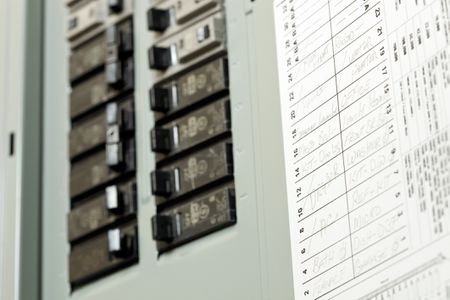Whether you’re remodeling your home or upgrading to a more advanced electrical system, the first thing on your to-do list should be learning about electrical code compliance requirements.
Smaller tasks, like replacing a light switch or fixture, shouldn’t require a code check, but anything bigger takes extra research and effort. National and local codes are guidelines that help ensure all electrical components are installed safely and function properly.
Ultimately, they exist to protect your family and your home, reducing the risk of fire or electrical shock. Take a look at some general requirements below to get started.
National and Local Electrical Codes
The first place to start is the National Electrical Code (NEC). It’s a massive volume that details all national codes for both commercial and residential wiring.
Don’t worry, you don’t have to buy the book. There are online versions available, or you can dust off that library card and check it out as a reference.
While the national codes are good to know, you also need to be aware of any local codes specific to your area. The best course of action here is to have a local electrician or inspector approve your wiring plans.
Be sure you complete this step BEFORE you start work. Remember, while it might be frustrating to ensure everything is up to code, these codes are set to ensure the safety of your home and your family.
Common Electrical Code Requirements
Generally speaking, the following are a few requirements you might run into for your home. As a reminder, your local building department might have varying stipulations, so be sure to check with them or an electrician before starting work.
Appliances, fixtures and receptacles
New receptacles and appliances must be safely grounded. Fixtures and appliances also need to be approved by Underwriters Laboratories (UL).
Boxes
While plastic electrical boxes are quite common throughout the United States, many local departments require metal boxes. Be sure to buy a box large enough so that your wires and cables aren’t cramped inside.
Cable
Usually a non-metallic cable can be used. If the cable will be exposed, conduit or armored cables are required.
Circuits
Your existing circuits cannot be overloaded by any extra services you are adding. Be sure to check with an inspector or electrician to ensure you aren’t overloading your existing circuit.
Service panels
Unless you are adding a new circuit to your home, your existing panel shouldn’t need an upgrade. If you are adding a new circuit, check with a local electrician to ensure the job is done properly and safely.
Wires
The size of wires is very important. 15 amp circuits require a 14-gauge wire, whereas 20 amp circuits require a 12-gauge wire. Be certain your sizing is correct.
Have Electrical Code Questions?
Have more code questions? We’re here to help! Contact us today to discuss your project.

